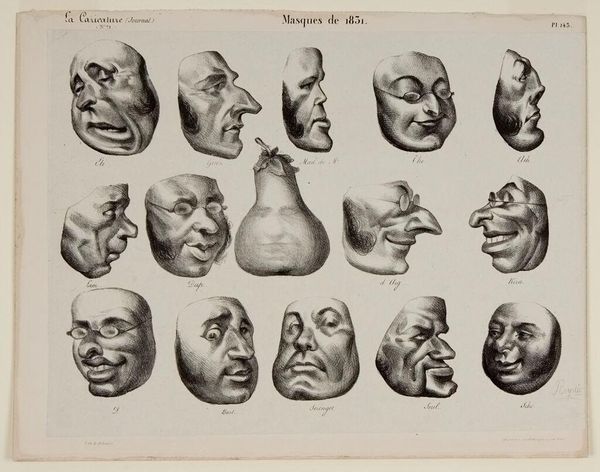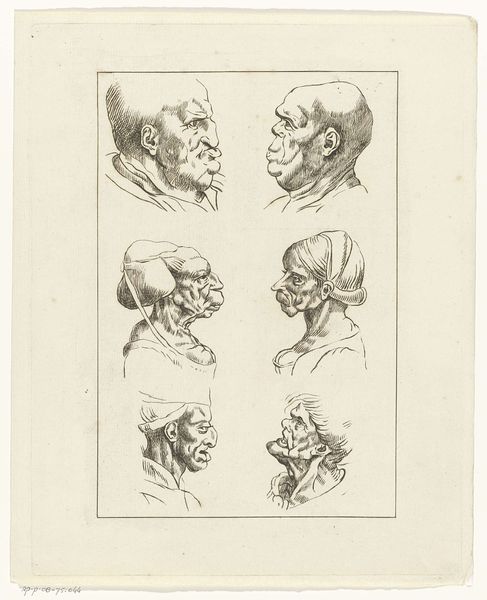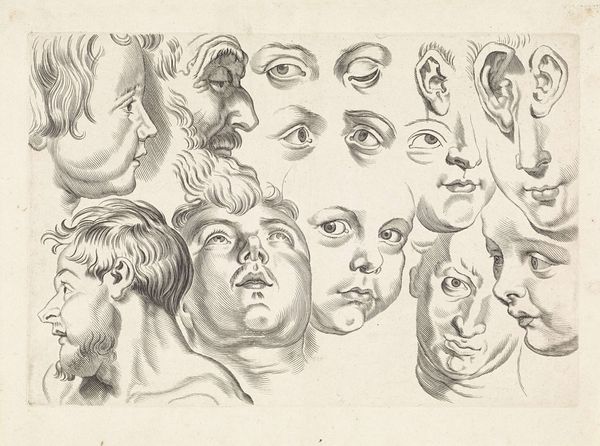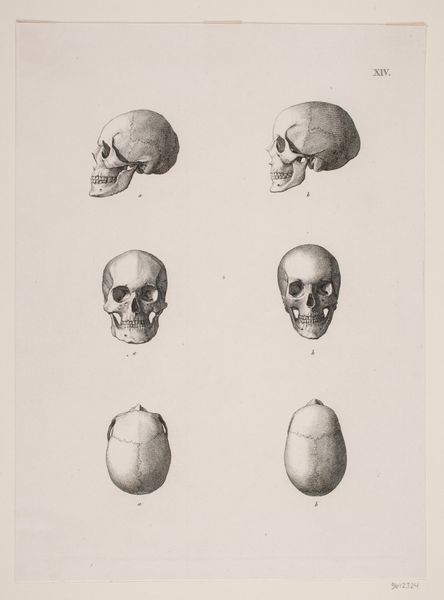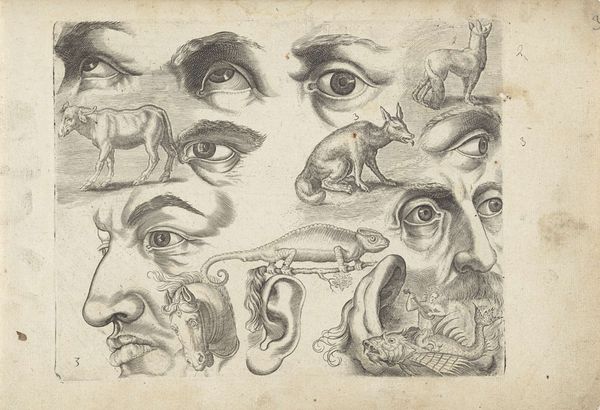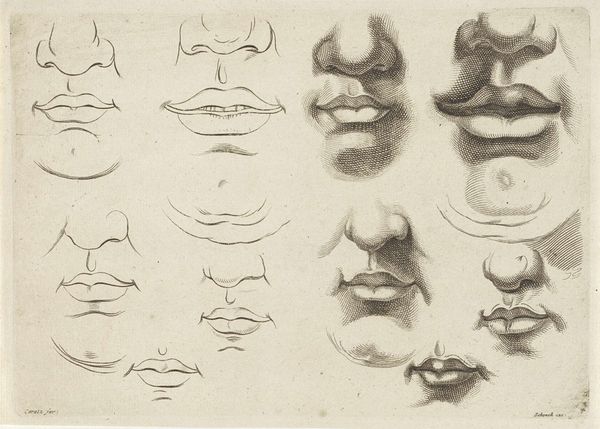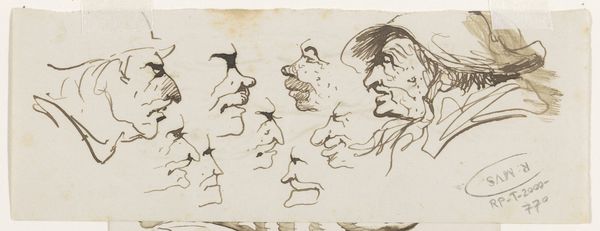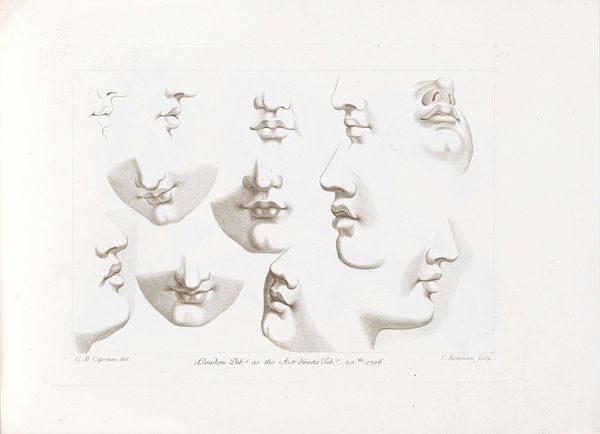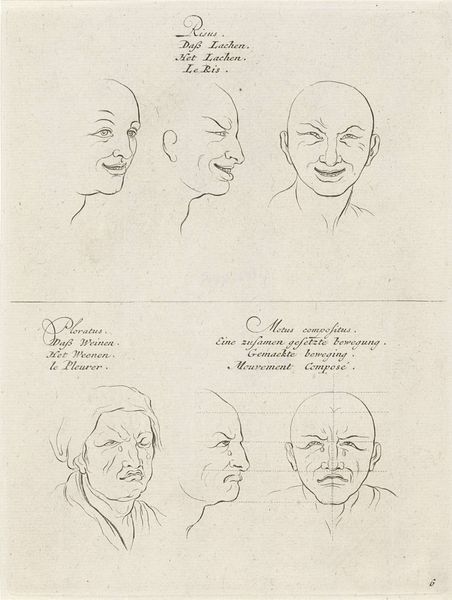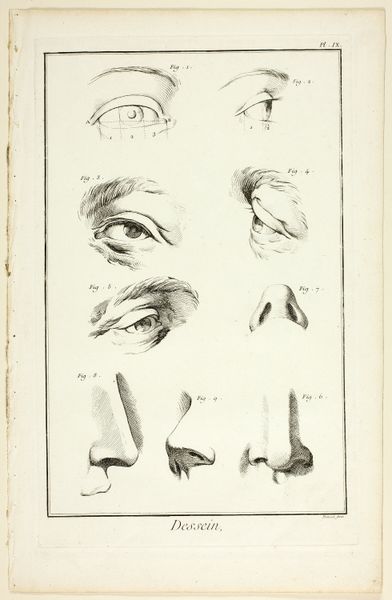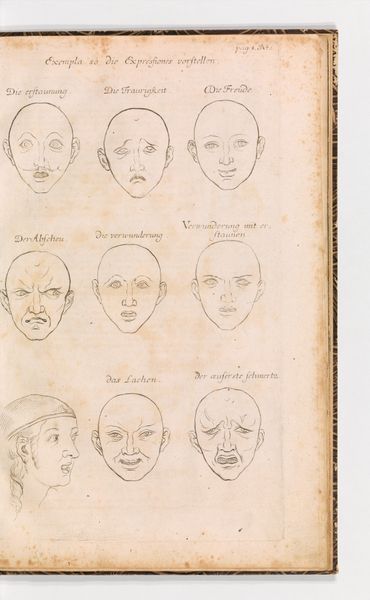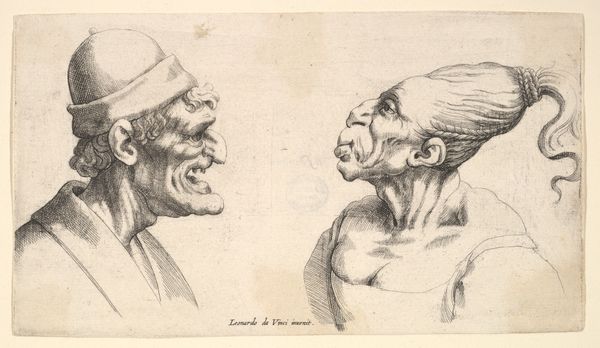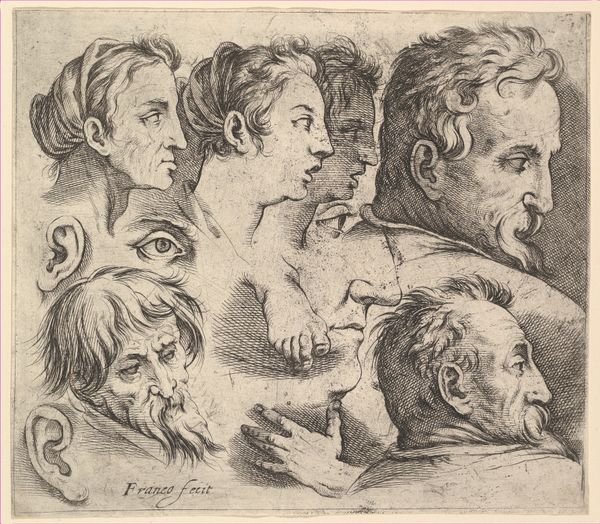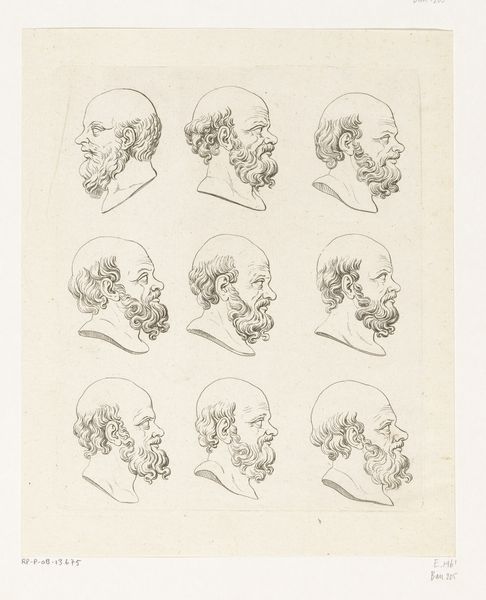
drawing, lithograph, print, paper
#
portrait
#
drawing
#
lithograph
# print
#
french
#
caricature
#
paper
#
france
#
portrait drawing
#
portrait art
Dimensions: 261 × 357 mm
Copyright: Public Domain
Curator: Daumier’s lithograph, "Masks of 1831," crafted in 1832, presents a grid of caricature portraits. It’s quite striking, isn’t it? Editor: Absolutely, the immediate impression is unsettling. The stark contrast, almost brutal. They appear more like grotesque masks than portraits, embodying the turbulent politics, perhaps? Curator: Exactly. As a print made for 'La Caricature,' this work highlights the materials readily available for mass production at the time. Daumier used lithography, printing from stone, to disseminate political critique to a broad audience. Editor: Yes, and this particular plate exposes the key figures of the July Monarchy in France. I am curious about what message the artist aims to send when positioning an actual pear next to the caricature profiles, especially given that the pear was already a common symbol of King Louis-Philippe? Curator: Daumier shrewdly used this readily understandable visual language of his day to challenge authority. The mass-produced format meant more people could access and share in this subversive critique of political power, effectively lampooning figures through accessible printed matter. Editor: We must note the satirical choices Daumier made while rendering the prints, paying close attention to the grotesque exaggerations, and strategically manipulating light and shadow to cast his subjects into roles that are less about the character and more about critiquing systems of control. How do we look beyond these individuals to talk about the larger implications for social change? Curator: The method of production made this sort of cultural defiance possible. Daumier skillfully exploited lithography to mobilize a resistance movement, demonstrating how ordinary material processes might question elitist, traditional structures. Editor: And it emphasizes how socially conscious work such as Daumier's helped shape a burgeoning cultural landscape, providing grounds for free thinking, where art acts not just as representation, but also as instigator and mirror to larger sociopolitical changes and realities. Curator: Considering Daumier’s clever handling of readily available resources, the piece emphasizes the democratizing aspect of art when coupled with intent and purpose. Editor: Precisely, by taking aim at prevalent power structures, he invited discussion, controversy, and eventually, perhaps, positive structural changes to long standing societal injustices. It remains profoundly relevant even now.
Comments
No comments
Be the first to comment and join the conversation on the ultimate creative platform.
